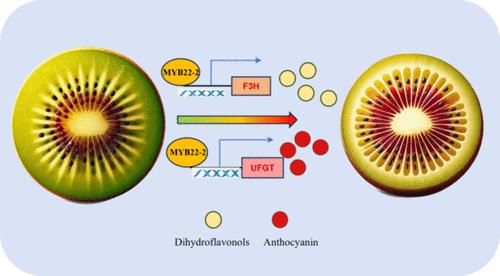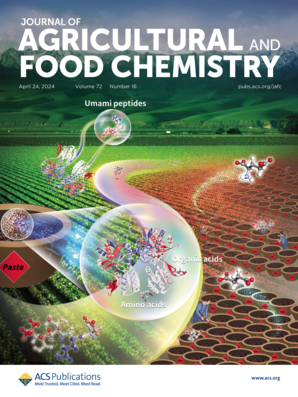Two AcMYB22 Alleles Differently Regulate Flavonoid Biosynthesis Resulting in Varied Flesh Color in Kiwifruit
IF 5.7
1区 农林科学
Q1 AGRICULTURE, MULTIDISCIPLINARY
引用次数: 0
Abstract
Flavonoids are essential nutrient compounds in kiwifruit, yet the specific regulatory mechanism governing their biosynthesis remains poorly understood. In this study, we identified an R2R3-MYB transcription factor (TF), AcMYB22, associated with flavonoid biosynthesis in kiwifruit. Two alleles of AcMYB22 were isolated: AcMYB22-1 is exclusively present in the cultivar “Hongyang”, while both AcMYB22-1 and AcMYB22-2 were identified in its mutant “H-16”, with nine single nucleotide polymorphisms. Overexpression of AcMYB22 in kiwifruit resulted in enhanced yellow flesh coloration with a b* hue value and a significant increase in flavonoid content. Moreover, transgenic kiwifruit plants of overexpressing AcMYB22 exhibited more pronounced yellow leaves with red margins accompanied by significant increases in total flavonoid and anthocyanin levels. The expression levels of flavonoid biosynthesis genes were significantly upregulated in transgenic plants with notably higher increases in AcMYB22-2 overexpressing plants compared to those overexpressing AcMYB22-1. Furthermore, yeast one-hybrid assays, electrophoretic mobility shift assays (EMSAs), and GUS activity assays confirmed that both AcMYB22-1 and AcMYB22-2 can physically bind to the promoters of AcF3H and AcUFGT, positively activating their transcription, with AcMYB22-2 exhibiting stronger activation activity than AcMYB22-1. These findings provide new insights into the regulatory mechanism of flavonoid biosynthesis in kiwifruit.

求助全文
约1分钟内获得全文
求助全文
来源期刊
CiteScore
9.90
自引率
8.20%
发文量
1375
审稿时长
2.3 months
期刊介绍:
The Journal of Agricultural and Food Chemistry publishes high-quality, cutting edge original research representing complete studies and research advances dealing with the chemistry and biochemistry of agriculture and food. The Journal also encourages papers with chemistry and/or biochemistry as a major component combined with biological/sensory/nutritional/toxicological evaluation related to agriculture and/or food.

 求助内容:
求助内容: 应助结果提醒方式:
应助结果提醒方式:


